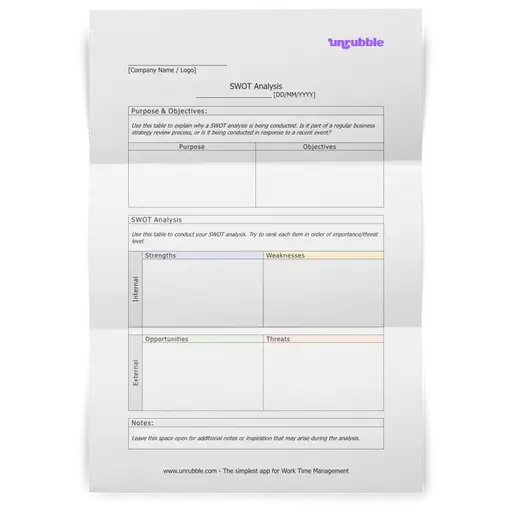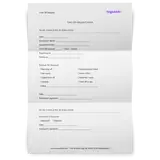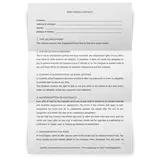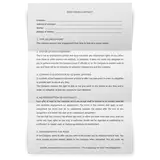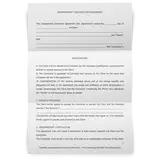If you have never conducted a swot analysis before, you might be feeling a bit overwhelmed with the terminology and process that it involves.
However, swot analyses are nothing to be afraid of. In fact, they can be extremely beneficial for your business or department!
Before starting your analysis, you might want to familiarize yourself with what a swot analysis is, why your business should conduct them regularly, and best practices for how to do a swot analysis successfully.
Here’s a sample SWOT template that can be easily customized and adapted to meet your requirements. It’s free to download and use.
What is a Swot Analysis Template?
A swot analysis is a qualitative business analysis that evaluates a company based on four criteria: internal strengths, internal weaknesses, market (or external) opportunities, and market (external) threats. A swot analysis template is simply a template that displays these criteria visually in an easy to understand way.
The purpose of a swot analysis is for upper-level management to get a broad idea of what the company is excelling in, what they can improve on, and what the market environment is like.
Swot analyses can be conducted on a regular basis, for example annually or quarterly. Alternatively, they can also be conducted in response to a recent event or change within the company or the market that the company is operating in.
Once a swot analysis is finished, management can then use the findings to inform the business strategy and take action where needed.
Why Conduct a Swot Analysis?
To have an accurate picture of the capabilities of the business.
A swot analysis requires a company to turn inward and reflect upon its own vulnerabilities and strengths. In doing so, managers and C-suite executives can have an accurate picture of a company’s true capabilities.
While this process might feel uncomfortable – nobody likes to admit their own weaknesses – it is still critical for formulating business strategies that are well-aligned with a company’s competencies.
To better understand the market environment.
The second component of a swot analysis requires management to look externally at the environment that the company is operating in. This includes an examination of potential threats, such as new competitors or new regulatory policies, as well as potential opportunities like new supplier innovations or other market developments.
To strategize more effectively.
Once a full swot analysis is completed, upper management is then empowered with valuable insights that can help guide its business strategy. This could involve a number of different departments including marketing and communications, finance, supply chain, operations, human resources, and legal.
Best Practices for Using Your Swot Template and Conducting a Swot Analysis.
- Make it into a fun event. A swot analysis is a perfect excuse for upper management to get together in-person to brainstorm, reflect, and take stock of the entire business and its environment. However, instead of making this process another boring meeting, you can use it as an opportunity to get away from the office and really focus on the business. If possible, try to book a meeting space at a scenic off-site location. This will allow your management team to really relax, avoid office distractions, and most importantly enjoy their time together.
- Invite a range of stakeholders to participate. If you want to truly understand the strengths and weaknesses of your business, you will need to invite a range of stakeholders to the table to participate in your swot analysis. This could include managers from various levels, locations, and departments within the company. The ideas, perspectives, and insights from these individuals are invaluable in the swot analysis process and can help you make the best long-term decisions for the company.
- Be honest. As mentioned previously, being honest about your own weaknesses or vulnerabilities is never easy, and it can be tempting to stick your head in the sand about the problems that your company is facing both internally and externally. However, in order to ensure that your swot analysis is as accurate as possible, it is important that you allow yourself to embrace any negative points that may arise – even if they may be difficult to face.
- Take time to research. Before you can use your swot example template, you must first set aside some time for research. To research your internal strengths and weaknesses, you might want to set up interviews or meetings with employees at every level of the company. This will give you a snapshot of what is really going on in your internal environment. To better understand your external environment, you may need to turn to your market research department to see if they have any existing research on competitors or market opportunities. If necessary, you may need to bring on an external research firm to help fill in any gaps in your research.
- Brief mid-level management on your findings. Mid-level managers are there on the front lines helping you to execute your business strategy, and they should be informed about any findings that may arise in your swot analysis. With your guidance and insights, they can then in turn help their respective departments improve on any weaknesses, lean into their strengths, and be on the lookout for any opportunities or threats in the areas identified in your analysis. This step is critical in getting your mid-level management on board with your overall business strategy.
- Transform findings into actionable tasks. Once your swot analysis example template is completed, you should then try to transform all of your findings into real, actionable tasks or projects. These tasks should then be allocated to the appropriate department, given a timeline, and followed up with throughout the year. Remember, the swot analysis should help to guide your decision-making, so make sure you use it to actually make real decisions about your business.
- Revisit it frequently. Your swot template is not something that you should fill out once and then never fill out again. On the contrary, this document should be re-evaluated and revisited over time. It is common to conduct a swot analysis on an annual basis, however, with some industries evolving at a rapid pace, it may be appropriate to conduct them on a quarterly or even monthly basis.
